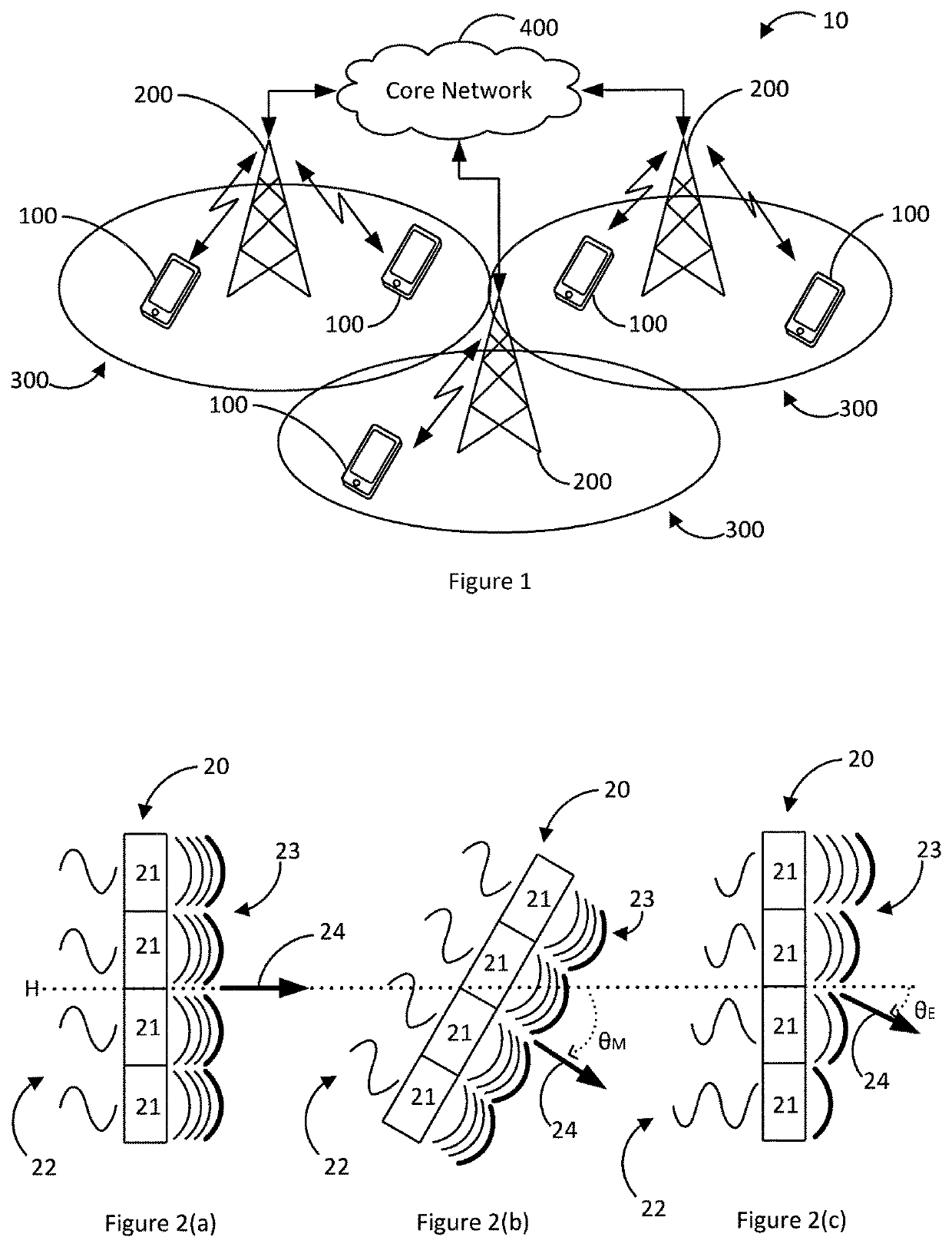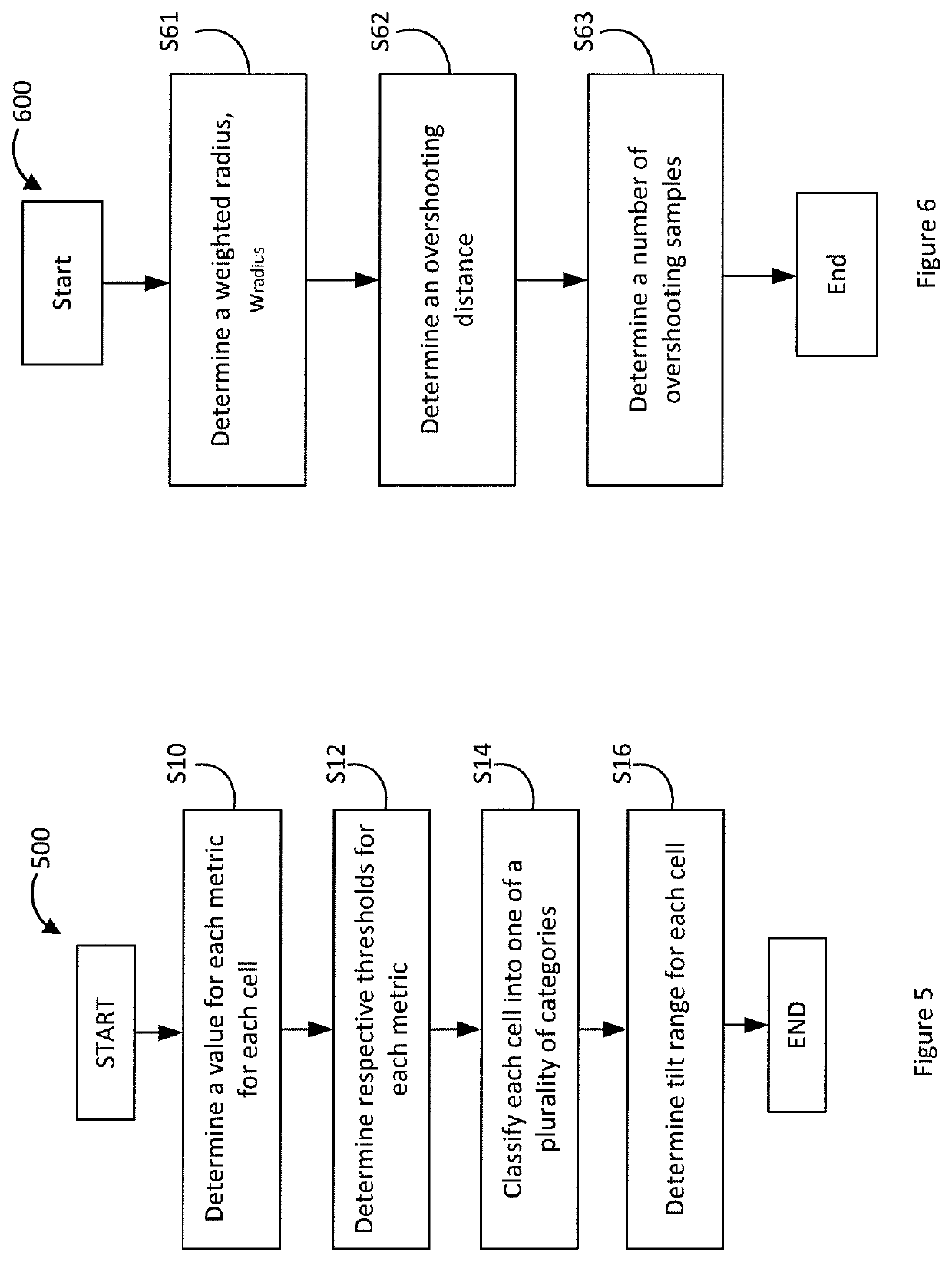KPI-Based Tilt Range Selection
- Summary
- Abstract
- Description
- Claims
- Application Information
AI Technical Summary
Benefits of technology
Problems solved by technology
Method used
Image
Examples
Embodiment Construction
[0046]Example embodiments of the present invention will now be described in detail with reference to the accompanying drawings.
[0047]Where technical features in the drawings, detailed description or any claim are followed by reference signs, the reference signs have been included for the sole purpose of increasing the intelligibility of the drawings, detailed description, and claims. Accordingly, neither the reference signs nor their absence have any limiting effect on the scope of any claim elements.
[0048]FIG. 1 is a schematic illustration showing a radio communication system 10, according to an example aspect herein. The radio communications system 10, and exemplary wireless telecommunication network, comprises a plurality of user equipments (UE) 100 and a plurality of radio base stations 200. Each radio base station 200 may, as in the present embodiment, be a LTE-A eNodeB. Alternatively, the radio base station may be, for example, a 5G gNB (next generation NodeB), LTE eNodeB, a 3...
PUM
 Login to View More
Login to View More Abstract
Description
Claims
Application Information
 Login to View More
Login to View More - R&D
- Intellectual Property
- Life Sciences
- Materials
- Tech Scout
- Unparalleled Data Quality
- Higher Quality Content
- 60% Fewer Hallucinations
Browse by: Latest US Patents, China's latest patents, Technical Efficacy Thesaurus, Application Domain, Technology Topic, Popular Technical Reports.
© 2025 PatSnap. All rights reserved.Legal|Privacy policy|Modern Slavery Act Transparency Statement|Sitemap|About US| Contact US: help@patsnap.com



